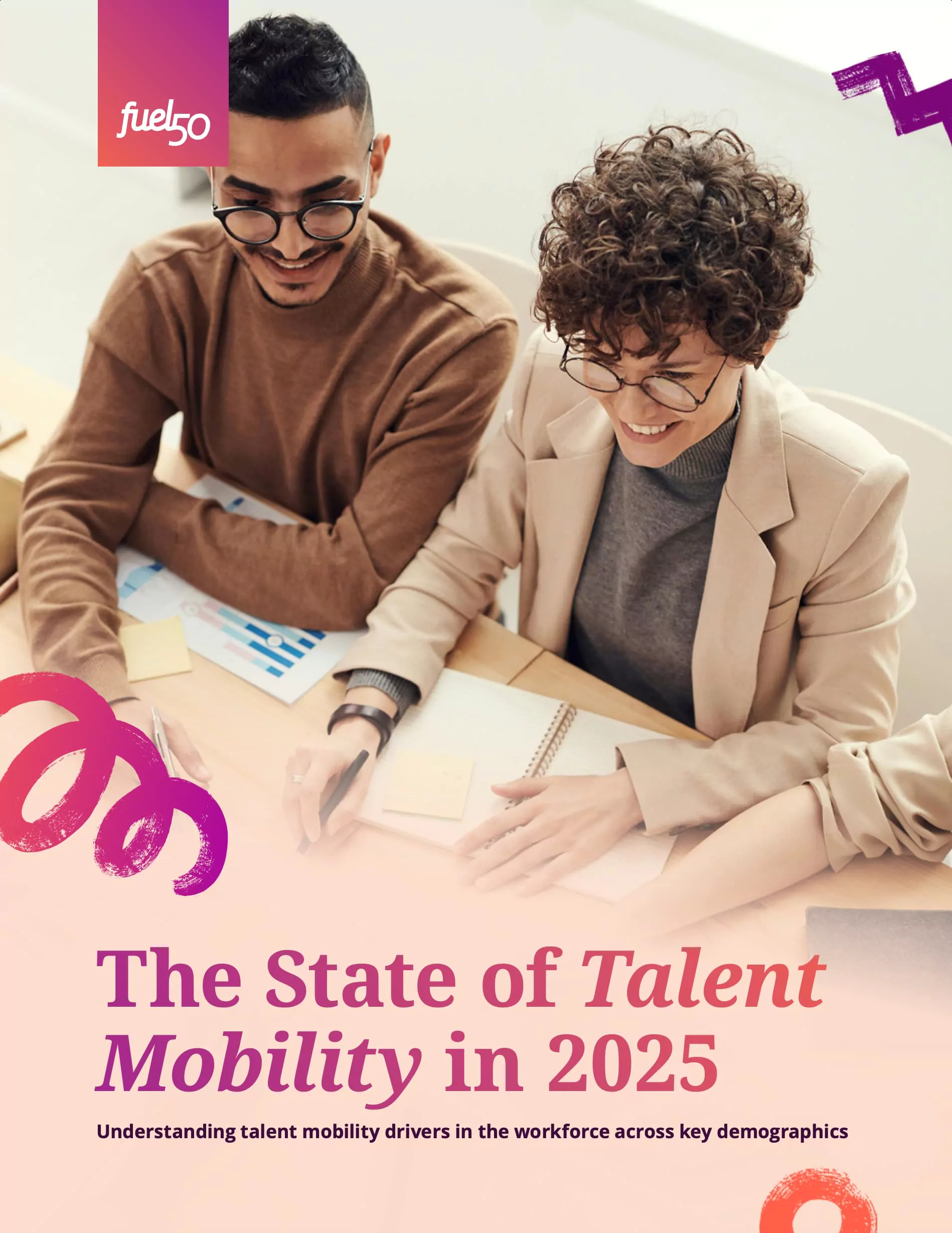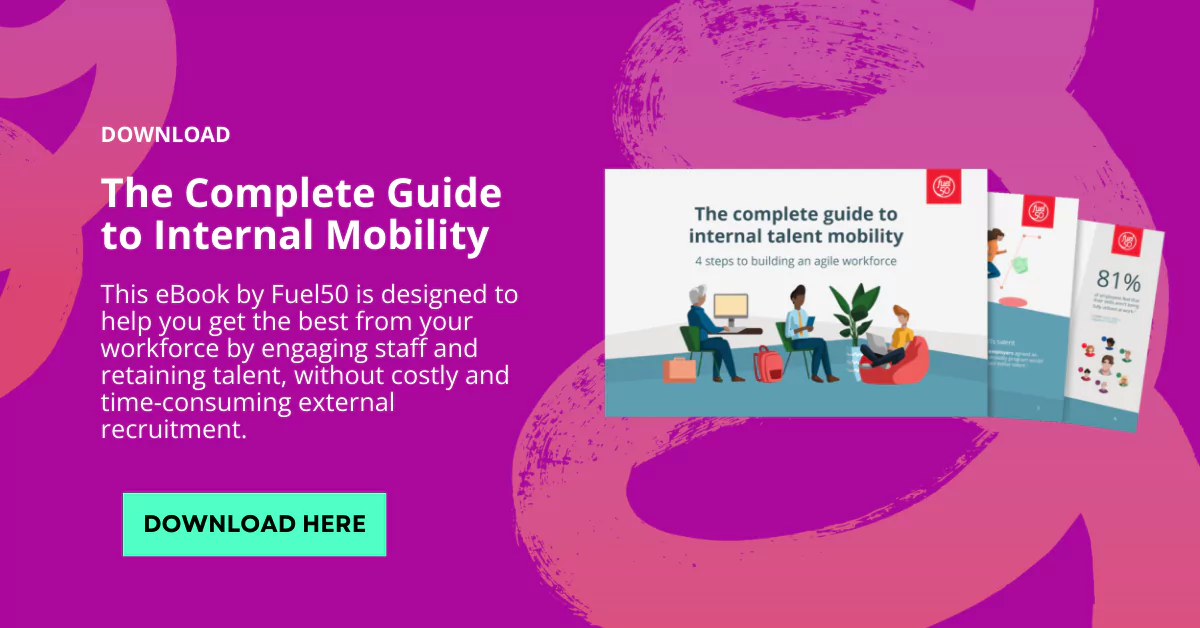The biggest challenge in selecting internal mobility software isn’t understanding what you need, it’s navigating through vendor promises that sound identical.
Every platform claims AI capabilities, skills frameworks, and seamless integration. Yet beneath similar marketing language lie fundamentally different approaches to workforce mobility.
We’ve analyzed some internal mobility software, and, in this article, we’ll focus on what each platform does differently and where they genuinely excel, so you can match their strengths to your specific needs.
Two key findings emerged:
-
Most platforms excel in one area (skills assessment, career pathing, project staffing) but fall short in others
-
Only a few solutions provide comprehensive capabilities that scale with enterprise needs
Let’s examine how each platform approaches internal mobility differently, and which types of organizations they serve best.
Fuel50: Best for enterprise-grade comprehensive talent intelligence and internal talent mobility
Fuel50 stands apart in the internal mobility space by offering a complete talent intelligence ecosystem rather than just a mobility platform.
Think of it as the “operating system” for modern workforce development. It doesn’t just move talent around, it transforms how organizations understand, develop and deploy their workforce capabilities.
AI-powered talent marketplace
At the heart of Fuel50’s platform is a sophisticated hyper-personalization engine that creates a unique “career DNA” for each employee.
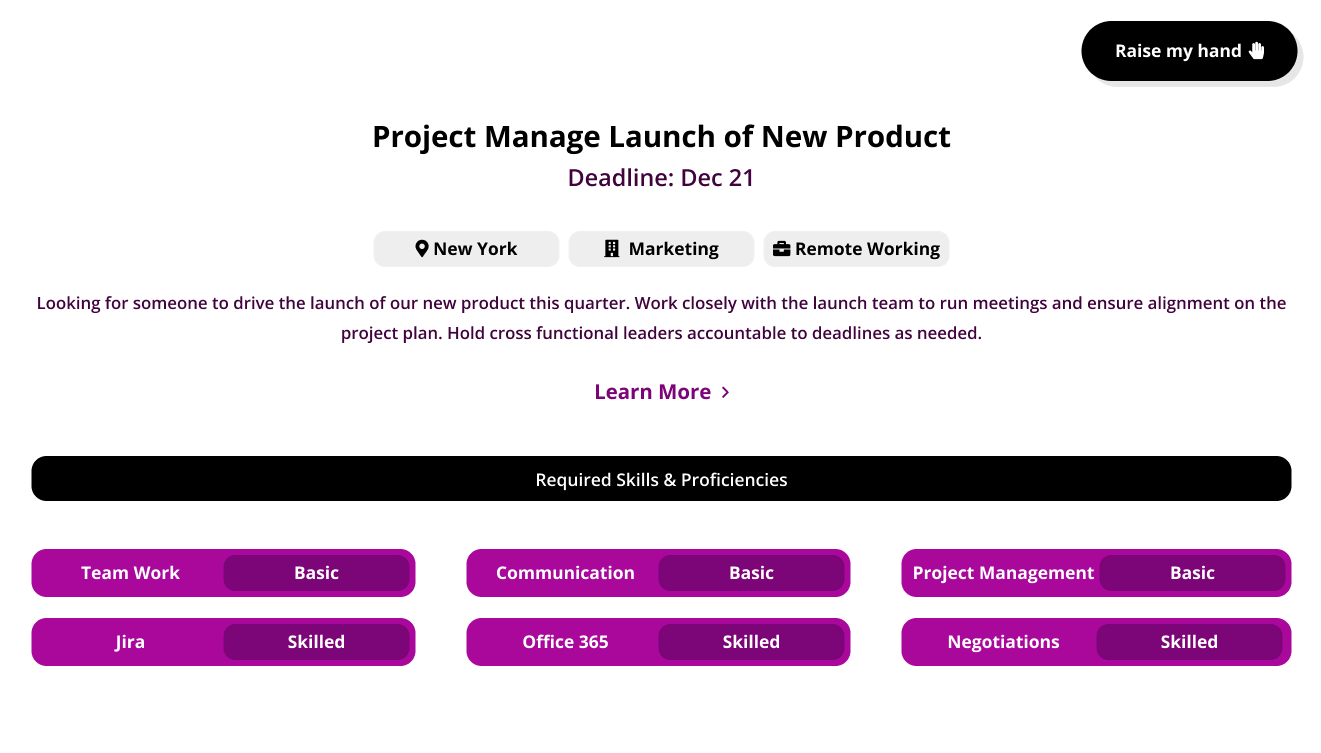
Unlike basic skill-matching systems, this DNA evolves continuously based on employee interactions, skills, and career aspirations, ensuring that the marketplace experience becomes more tailored over time.
The platform’s smart-matching capabilities go beyond simple keyword matching, using deep learning algorithms to understand the nuanced relationships between skills, experiences, and potential. This allows for more accurate and meaningful opportunity matches.
Key differentiators of the marketplace include:
-
Built-in bias checks to ensure opportunities are presented fairly
-
Both full-time role moves and project-based “gig” assignments
-
Mentorship matching for knowledge transfer
-
Integration with learning recommendations
-
Real-time adaptation to organizational changes
Dynamic skills architecture
Fuel50’s approach to skills architecture represents a paradigm shift in how organizations structure their workforce.
The Talent Blueprint™ uses AI to analyze an organization’s existing roles, skills, and structure, then maps this to market data to create a comprehensive, up-to-date workforce architecture that leverages the existing workforce to fill skills gaps, reduce hiring costs, and enhance employee engagement.
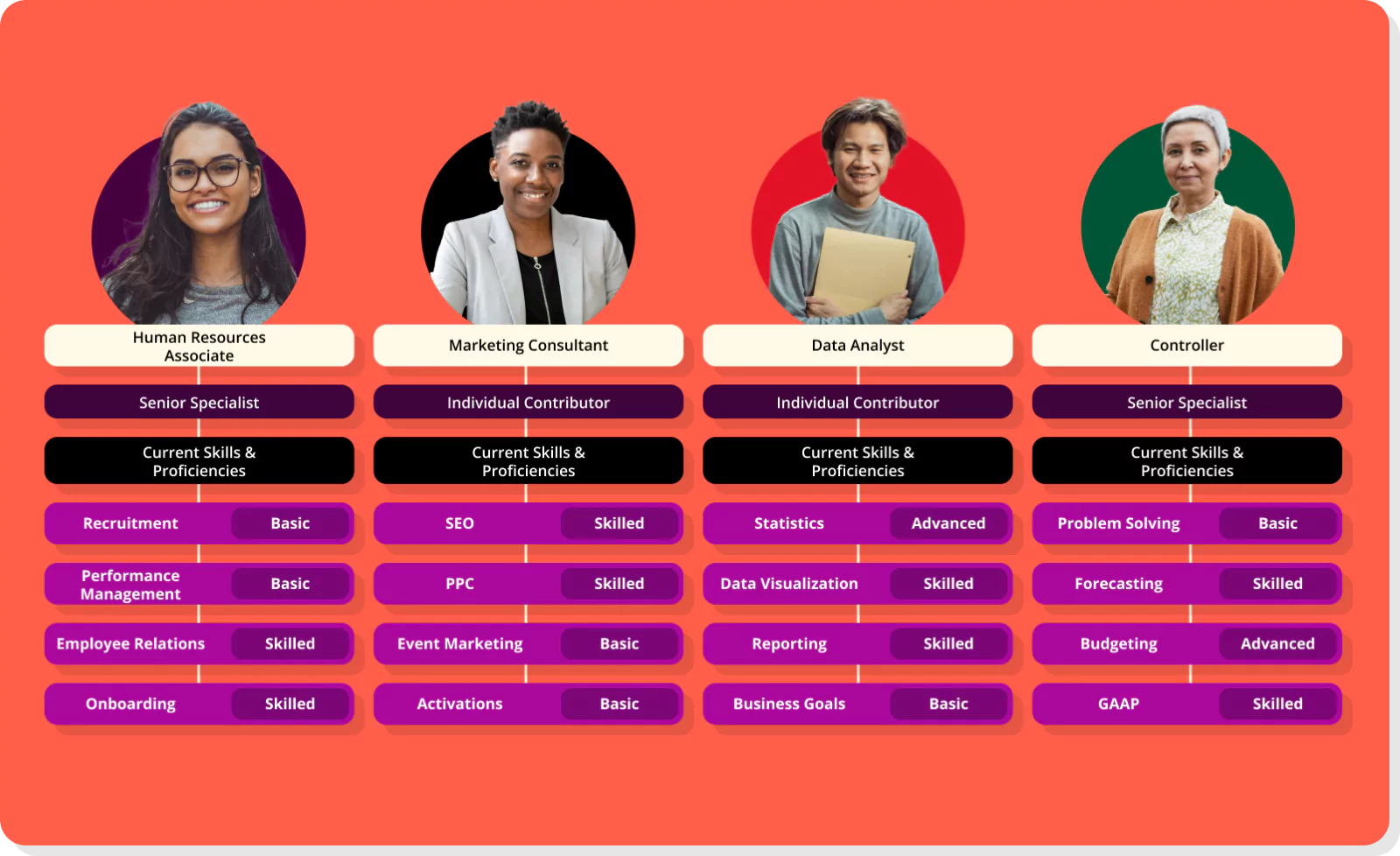
What sets this apart is the DNA Imprint™ feature, which allows organizations to infuse their unique culture, values, and strategic priorities into the architecture.
This ensures that the skills framework isn’t just a generic template, but a true reflection of what makes the organization unique and successful.
Industry-leading skills ontology
The depth and sophistication of Fuel50’s skills ontology, particularly in assessing and utilizing employee skills, sets it apart in the market. With over 5,000 specialist skills, capabilities, and tools, it provides a granular and nuanced understanding of the skills landscape within an organization.
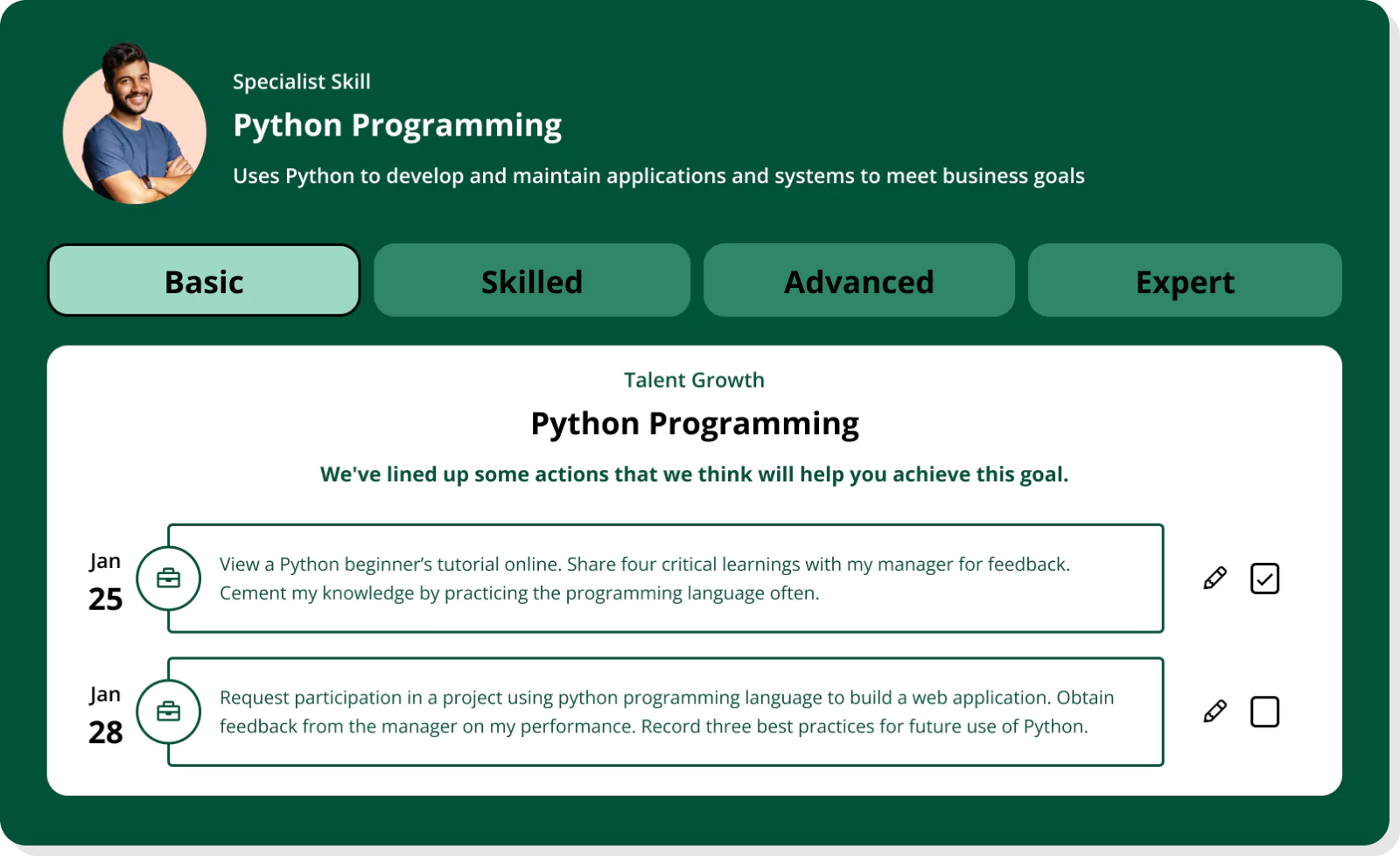
Each skill comes with:
-
Clear definitions and proficiency level descriptions
-
Suggested development actions
-
Regular updates based on market trends
-
Built-in DEI considerations
-
Support for 13 languages
Comprehensive analytics and insights
Fuel50’s analytics capabilities transform raw data into strategic intelligence, providing a multi-faceted view of an organization’s talent landscape.
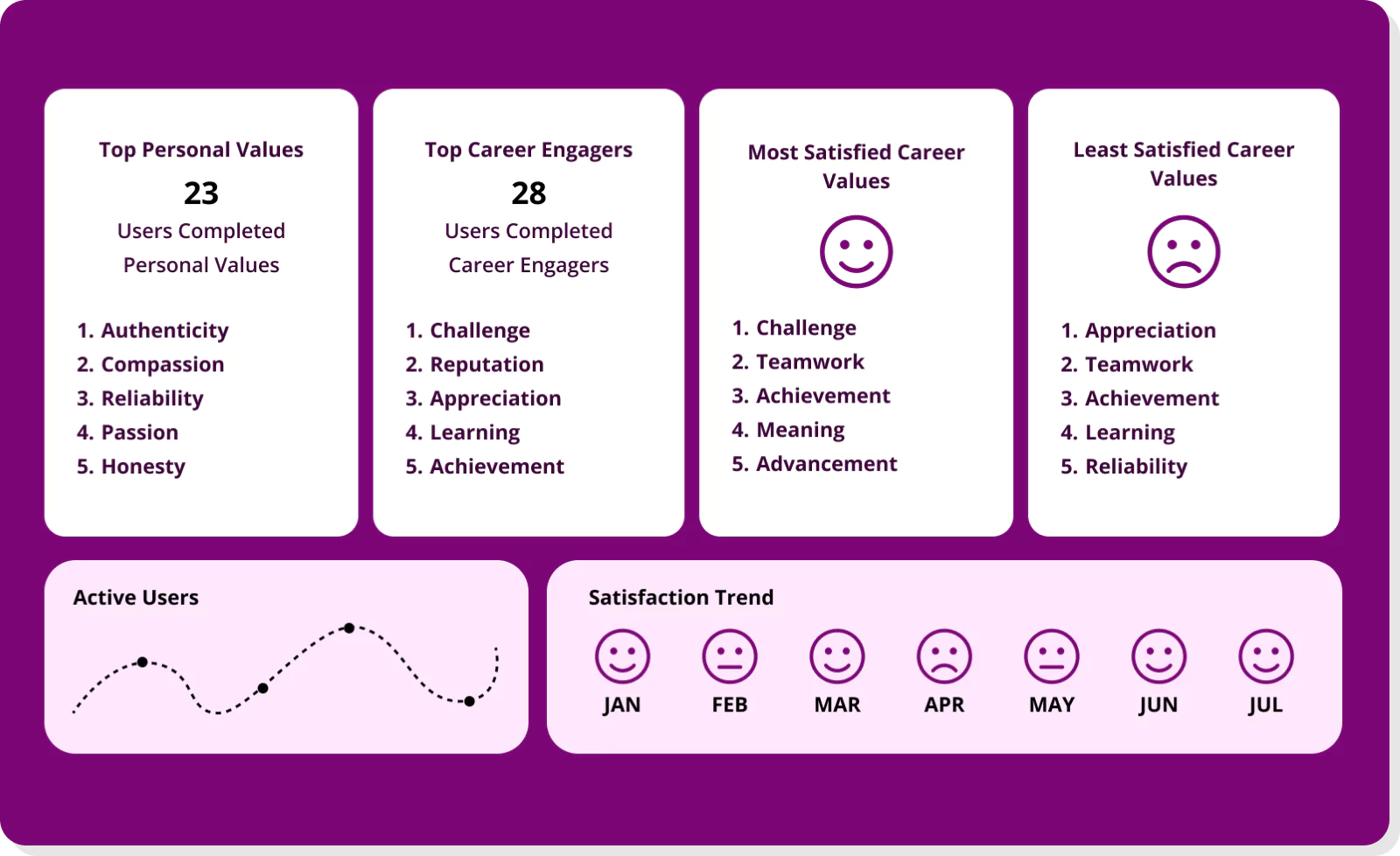
The platform measures impact across multiple dimensions:
The platform delivers actionable insights about:
-
Skills distribution and skills gaps
-
Internal mobility effectiveness
-
Employee engagement levels
-
Leadership development needs
-
Succession planning readiness
TalentGuard: Best for personalized career paths and development-focused internal mobility
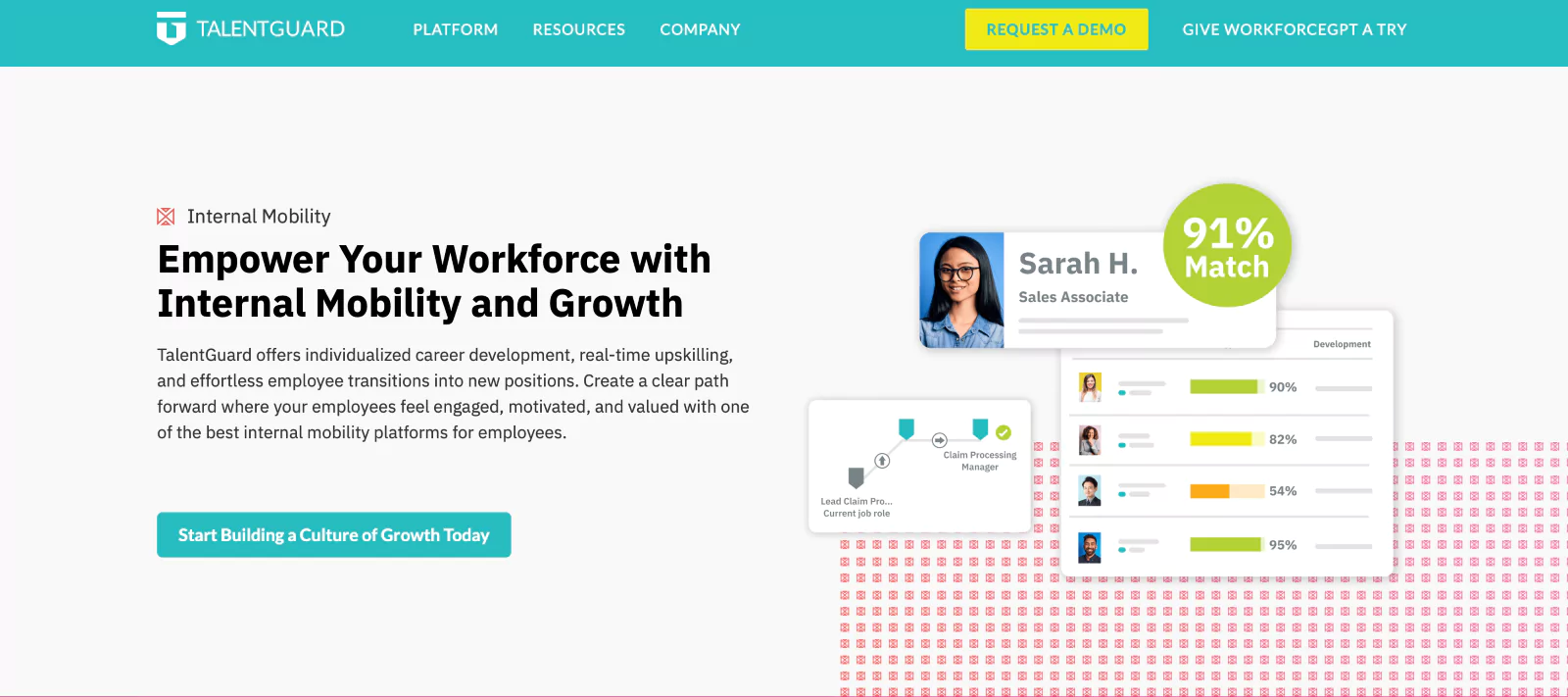
TalentGuard approaches internal mobility through the lens of career development and succession planning.
Think of it as the “career counselor” of internal mobility platforms. Their strength lies in creating structured, data-driven career paths that align individual development with organizational needs.
What makes TalentGuard distinctive is its WorkforceGPT and AI-driven approach to career pathing and skill development. Rather than just matching people to open roles, the platform creates personalized development journeys that prepare employees for future positions.
This forward-looking approach can be particularly valuable for enterprises focused on long-term talent development and succession planning.
However, this emphasis on career development and structured progression reveals some inherent tradeoffs:
Key strengths:
-
Sophisticated career pathing and succession planning tools
-
AI-powered skill assessments and development planning
-
Strong focus on reducing bias in advancement decisions
-
Integrated performance review and 360-degree feedback capabilities
-
Clear metrics showing 35% increase in internal mobility within 12 months
Notable limitations:
-
May feel overly structured for organizations seeking more fluid talent deployment
-
Could be too development-focused for companies needing immediate talent matching
-
Potentially complex implementation requiring significant HR process alignment
-
More suited for traditional career progression than project-based work or an internal mobility strategy
The platform works best for enterprises that:
-
Need structured succession planning and career development
-
Want to reduce bias in promotion decisions
-
Value long-term employee development over rapid redeployment
-
Have mature HR processes and development frameworks
However, organizations seeking more dynamic, project-based talent mobility might find TalentGuard’s structured approach too rigid. While it excels at traditional career development and succession planning, it may be less suited for companies needing rapid, flexible talent deployment.
Think of TalentGuard as the traditional career ladder reimagined for the digital age – excellent for organizations that want to maintain clear progression paths while leveraging AI and data to make better decisions.
But this traditional foundation might not suit companies looking to break away from hierarchical structures entirely.
For talent leaders evaluating TalentGuard, the key question becomes: Does your organization need structured career development more than dynamic talent deployment?
While the platform offers sophisticated capabilities for career pathing and development, its success depends on your organization’s commitment to traditional career progression models, albeit enhanced by AI and data analytics.
iMocha: Best for skills-based internal mobility with assessment focus
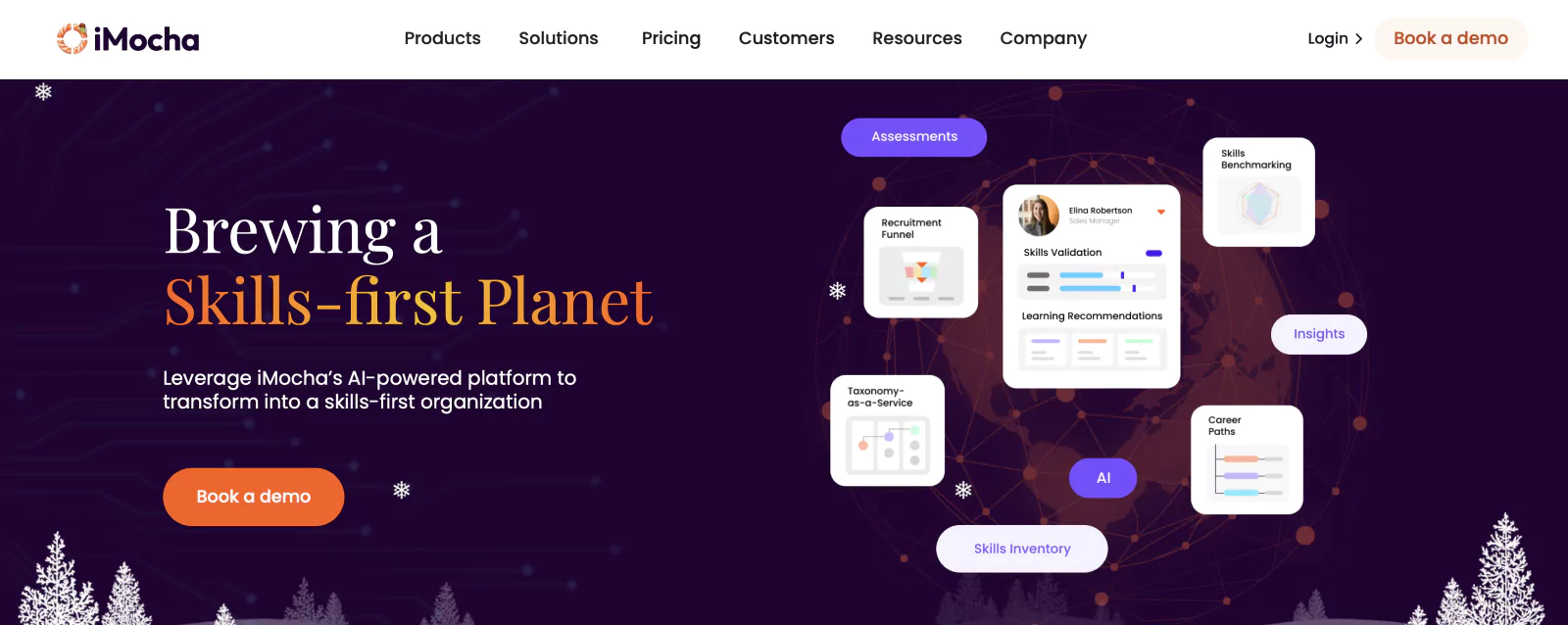
iMocha focuses on skills intelligence and assessment, making it particularly well-suited for enterprises looking to make data-driven decisions about talent movement.
Their platform’s core strength lies in its comprehensive skills mapping and assessment capabilities – think of it as the “skills MRI” of your organization.
What sets iMocha apart is its AI-LogicBox feature, which creates custom skill assessments based on specific role requirements.
Unlike platforms that rely on self-reported skills or basic matching algorithms, iMocha validates capabilities through actual assessment. This is crucial for enterprises where the cost of a poor internal move can be significant.
However, this assessment-first approach comes with tradeoffs. While iMocha excels at skills verification, it may not provide the rich career pathing and development features that some competitors like Fuel50 offer.
Think of it as having an extremely accurate GPS that tells you where you are but offers less guidance about possible routes forward.
Key strengths:
-
Robust skills validation through AI-driven assessments
-
Comprehensive skills taxonomy and mapping capabilities
-
Strong analytics for skills-based matching
-
Hiring managers can focus on objective data over subjective evaluations
Notable limitations:
-
May feel overly assessment-focused for organizations seeking a more holistic mobility approach
-
Less emphasis on employee career development and aspiration mapping
-
Could require integration with additional tools for complete talent mobility strategy
For enterprises, iMocha’s platform works best when skills validation is a critical concern – for example, in technical organizations where role-specific capabilities must be verified.
It’s particularly valuable in industries like technology, engineering, and professional services where skills currency directly impacts business outcomes.
The platform’s detailed analytics and assessment capabilities make it strong for organizational processes like:
-
Rapid redeployment based on validated skills
-
Project-based talent allocation
-
Technical capability verification for internal moves
However, organizations seeking to build a comprehensive internal mobility program may need to supplement iMocha with additional tools focused on career development, mentoring, and employee experience.
The platform’s strength in skills assessment needs to be balanced against the broader needs of a modern talent mobility strategy.
Hitch Works: Best for skills-based team building and dynamic project staffing
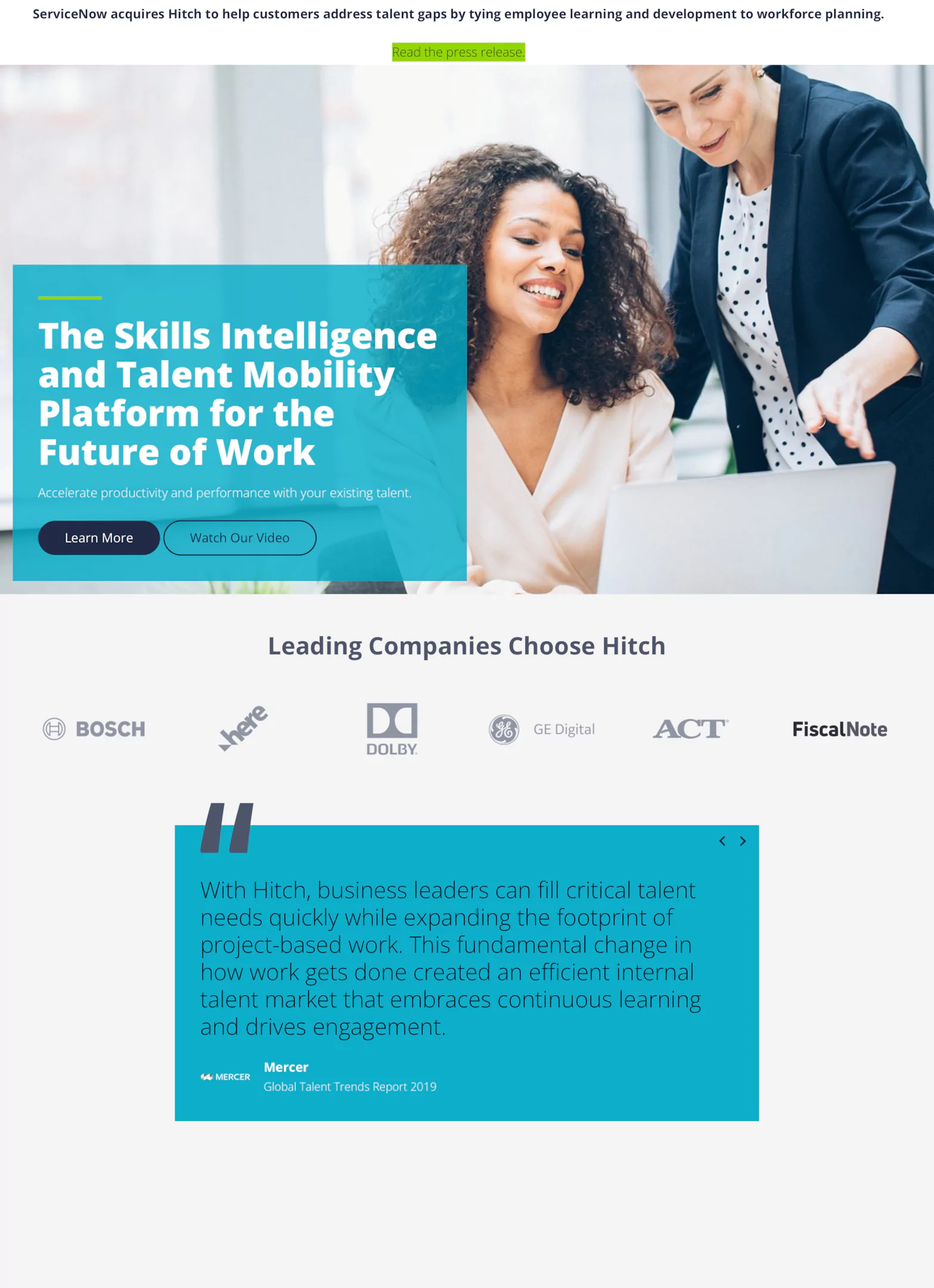
Hitch Works takes a unique approach to internal mobility by focusing on dynamic team assembly and project-based staffing. Think of it as the “project manager’s platform” for internal talent.
Their emphasis on matching people to work rather than just to roles sets them apart in an increasingly project-based economy.
What makes Hitch Works compelling is its AI-powered skills matching engine that focuses on actual work needs rather than traditional job descriptions.
The platform shines in organizations where project-based work is common and teams need to be assembled quickly based on specific skill requirements. This is particularly valuable for consulting firms, technology companies, and matrix organizations.
However, this project-centric approach reveals some limitations:
Key strengths:
-
Sophisticated AI matching for project-based work
-
Strong focus on skills visibility and mapping
-
Emphasis on dynamic team building
-
Integration capabilities with major HR systems
-
Built-in privacy and security features (GDPR compliant)
Notable limitations:
-
May be overly complex for organizations with traditional hierarchical structures
-
Less emphasis on long-term career development compared to competitors like Fuel50
-
Could require significant change management for full adoption
-
Might feel overwhelming for organizations just starting their internal mobility journey
The platform works best for enterprises that:
-
Operate in a project-based environment
-
Need to quickly assemble teams based on skills
-
Value flexibility in workforce deployment
-
Have mature HR processes and change management capabilities
However, organizations seeking a more traditional career development and internal mobility solution might find Hitch Works’ project-first approach challenging to implement. While it excels at dynamic team building, it may need supplementation for traditional career pathing and development needs.
Think of Hitch Works as the agile methodology of internal mobility platforms – excellent for organizations that need to move quickly and adapt team structures frequently, but potentially too fluid for companies with more stable, hierarchical structures.
The platform’s emphasis on “democratization of work” and dynamic teaming suggests it’s built for the future of work, but that future hasn’t fully arrived at many organizations.
For talent leaders evaluating Hitch Works, the key question becomes: Is your organization ready for truly dynamic, project-based talent deployment? While the platform offers sophisticated capabilities for skills-based team building, success requires a cultural readiness for this more fluid approach to work organization.
Symphony Talent: Best for employer brand-focused internal mobility
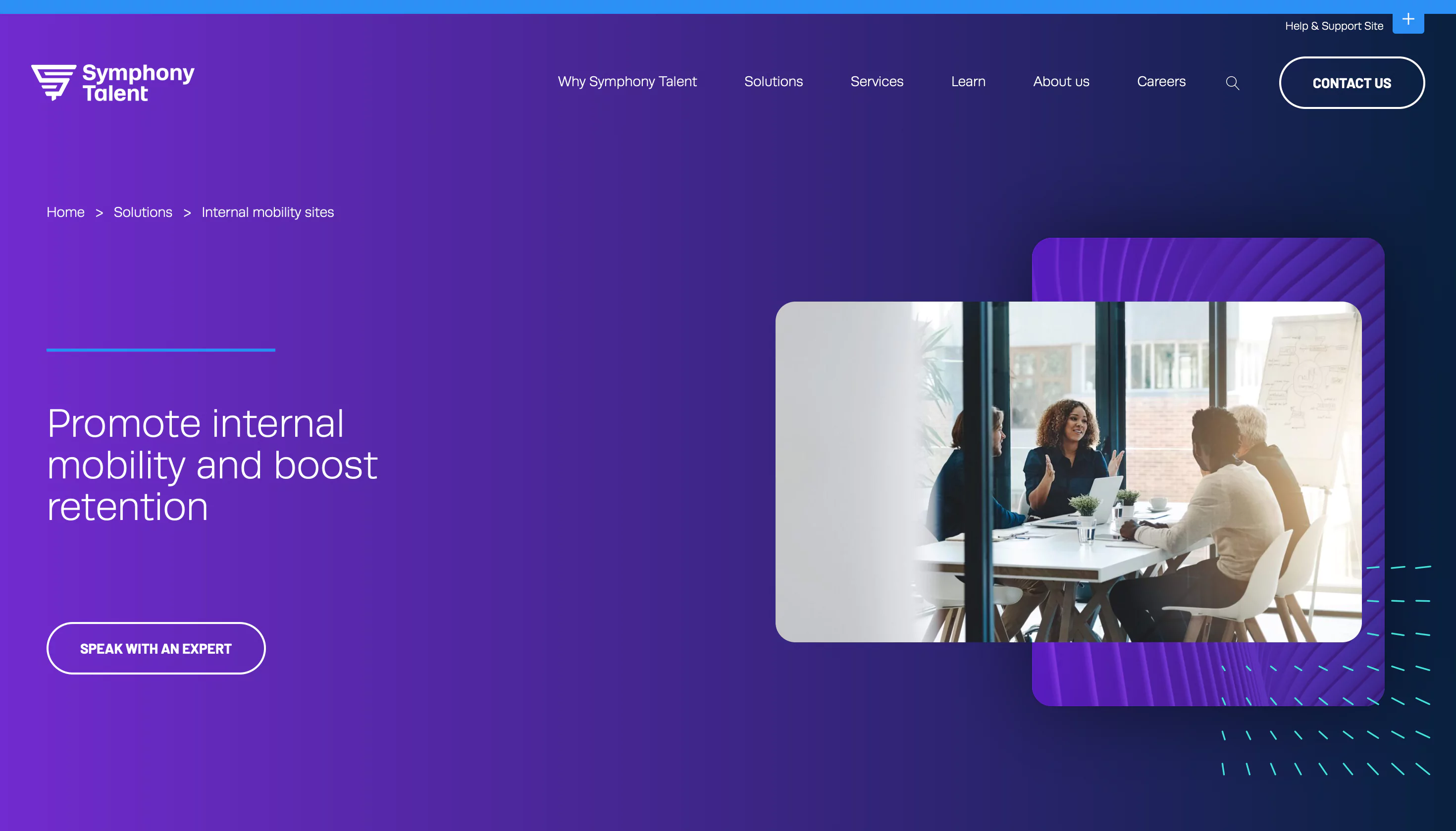
Symphony Talent approaches internal mobility through the lens of employer branding and talent marketing; an interesting angle that sets it apart in the internal mobility space.
Think of it as the marketing agency of internal mobility platforms, where the focus is on creating compelling career narratives and engagement rather than pure skills matching.
What makes Symphony Talent distinctive is its integration of employer branding with internal mobility functionality.
The platform treats internal candidates like valued customers, delivering personalized career content and opportunities through branded internal career sites. This marketing-first approach can be particularly powerful for large enterprises trying to create a culture of internal mobility.
However, this emphasis on brand and marketing comes with notable tradeoffs. While Symphony Talent excels at creating engaging internal career experiences, it appears less robust in areas like skills intelligence and workforce planning that competitors like Fuel50 and iMocha have mastered.
Key strengths:
-
Strong employer brand integration capabilities
-
Seamless CRM integration for talent visibility
-
Focus on employee engagement through content
-
Built-in career site creation and management
-
Integration with broader talent acquisition suite
Notable limitations:
-
Less emphasis on skills-based matching and assessment
-
May lack sophisticated workforce planning capabilities
-
Could feel marketing-heavy for organizations seeking deeper analytical capabilities
-
More focused on traditional job posting approach vs. dynamic talent marketplace
The platform works best for enterprises that:
-
Want to extend their external employer brand internally
-
Need to integrate internal mobility with broader recruitment marketing
-
Value engagement and communication over algorithmic matching
-
Already have strong skills assessment processes in place
However, organizations seeking a comprehensive internal mobility solution might find Symphony Talent’s offering incomplete. While it excels at creating engaging career experiences, it may need to be supplemented with additional tools for skills assessment, career pathing, and workforce analytics.
Think of Symphony Talent as the marketer’s approach to internal mobility – excellent at creating awareness and engagement around internal opportunities, but potentially lacking in the deeper analytical and skills-matching capabilities that many enterprises now require for strategic workforce planning.
For talent leaders evaluating Symphony Talent, the key question becomes: Is a marketing and brand-centric approach to internal mobility sufficient for your organization’s needs?
While engagement and communication are crucial elements of successful internal mobility programs, modern enterprises often require more sophisticated capabilities in areas like skills intelligence, career pathing, and workforce analytics.
The bottom line: Choose your internal mobility tool based on your talent strategy
While platforms like Symphony Talent excel at employer branding, Hitch Works at project staffing, TalentGuard at career pathing, and iMocha at skills assessment, they each serve organizations looking for generalist solutions to talent challenges.
However, if you’re seeking:
-
A comprehensive talent intelligence platform that transforms how you understand and deploy workforce capabilities
-
Industry-leading skills ontology maintained by I/O psychologists, available in 13 languages
-
Proven results in reducing attrition (50% reduction at UCI) and improving talent retention
-
Real impact on employee engagement with 85%+ adoption rates at enterprise scale
-
The ability to move beyond basic mobility to true skills-based organization
-
A platform that grows with your organization’s talent maturity
Then Fuel50 is what you are looking for. Book a demo with Fuel50.
